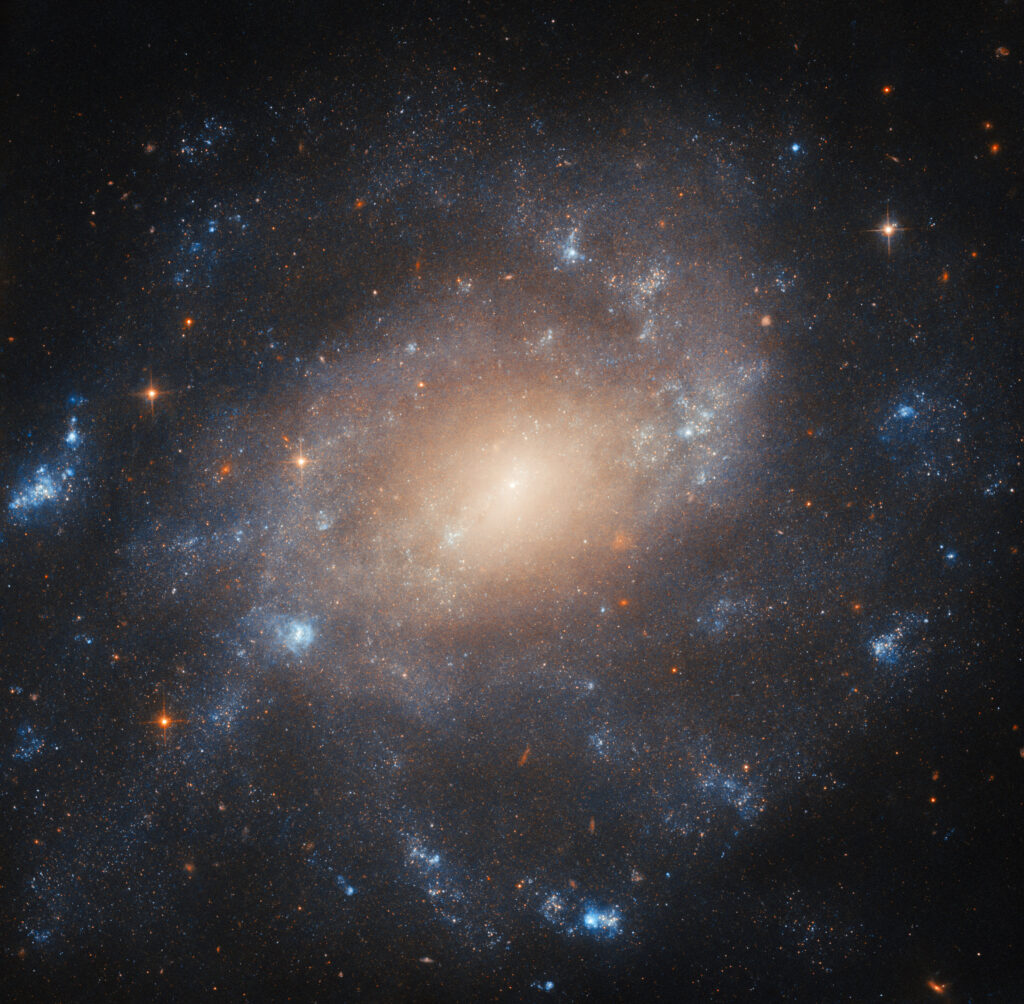Astronomers working with the Hubble telescope have published a new image. It shows the galaxy ESO 422-41.

ESO 422-41 is located at a distance of 34 million light-years from Earth in the direction of the constellation Columba. Like our Milky Way, it is a spiral galaxy. Hubble’s photo allows us to examine its structure in detail. We can see the spiral arms of ESO 422-41, studded with many star clusters, as well as the glow of its dense core.
Despite its facelessness, the name of the galaxy ESO 422-41 is quite curious, because it provides a glimpse into the history of astronomy. Before the advent of automated sky surveys, astronomers used the most powerful telescopes of the time to take hundreds of photographs covering a specific area of the sky. Later, they studied the resulting images, trying to compile a catalog of all the new objects discovered.
In the 1970s, the new telescope of the Southern European Observatory conducted a similar survey of the southern sky, which was then studied worse than the northern one. At that time, the main technology for recording images was glass plates treated with chemicals. This is how the ESO’s Atlas of the Southern Sky (B) was created. It allowed astronomers to find hundreds of previously unknown galaxies, including ESO 422-41.
Since then, astronomy has taken a huge step forward in favor of digital automated sky surveys. Nevertheless, scientists still sometimes turn to archives and look through glass plates — for example, while studying variable stars.
According to https://esahubble.org
Follow us on Twitter to get the most interesting space news in time
https://twitter.com/ust_magazine


